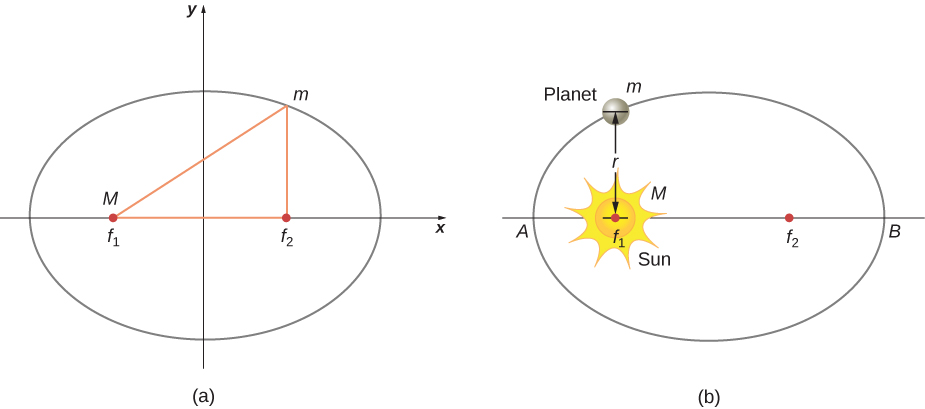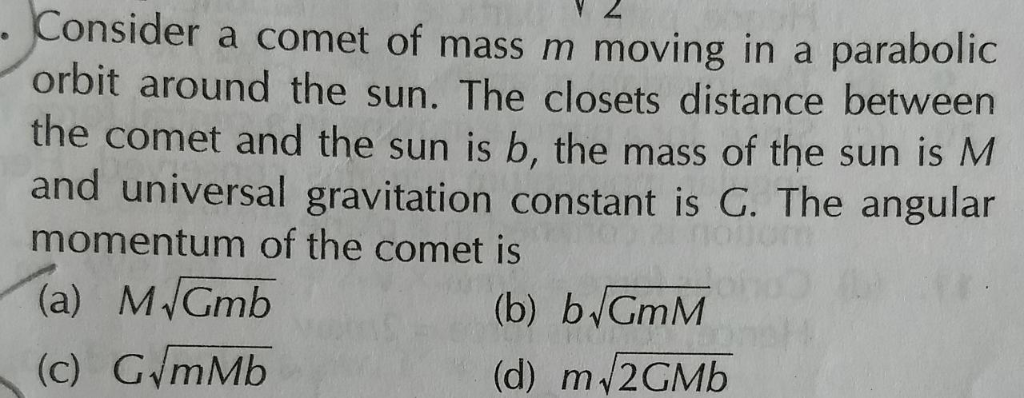The exception is that from a nearly parabolic orbit around one of the four giant planets one can inject the spacecraft at significant speed towards the inner solar system by performing a modest chemical burn near the planet and thus utilizing the Oberth effect. Parabolic Orbit (e = 1, En = 0) The parabolic orbit serves as a boundary between the elliptic (periodic) orbits and the hyperbolic (escape) orbits. It is the orbit of least energy that allows escape. The orbit equation becomes, Further, the periapsis distance = r(0) = p/2 = h2 / 2. The energy equation becomes. The actual orbit of these comets significantly differs from the provided coordinates. A Solar System barycentric orbit computed at an epoch when the object is located beyond all the planets is a more accurate measurement of its long-term orbit. List of near-parabolic comets. In astronomy, a parabolic trajectory (also known as parabolic orbit or parabolic escape trajectory) refers to an object (such as an asteroid) which follows a path similar to a parabola around another object. This motion follows Kepler's Laws. A parabolic trajectory occurs when the eccentricity of its orbit is equal to 1. Eccentricity: A perfectly circular orbit has an eccentricity of zero, an elliptical orbit an eccentricity of 0 to 1, a parabolic orbit an eccentricity of 1 and a hyperbolic orbit of 1. The low point of an orbit is known as perigee, whilst the high point is apogee. The major axis is the vector connecting the perigee to the apogee.
(redirected from Parabolic trajectory)Also found in: Wikipedia.
parabolic orbit
[¦par·ə¦bäl·ik ′ȯr·bət] (astronomy)
Want to thank TFD for its existence? Tell a friend about us, add a link to this page, or visit the webmaster's page for free fun content.
Link to this page:

When a “long-period” comet comes in from the Oort belt, it typically comes in on a highly eccentric orbit, of which we can observe only a very short arc. Consequently, it is often impossible to determine the period or semi major axis with any degree of reliability or to distinguish the orbit from a parabola. There is therefore frequent occasion to have to understand the dynamics of a parabolic orbit.
We have no mean or eccentric anomalies. We must try to get (v) directly as a function of (t) without going through these intermediaries.
The angular momentum per unit mass is given by Equation 9.5.28a:
[h = r^2 dot{v} = sqrt{2G textbf{M} q}, label{9.7.1} tag{9.7.1}]
where (v) is the true anomaly and (q) is the perihelion distance.
But the Equation to the parabola (see Equation 2.4.16) is
[r = frac{2q}{1 + cos v}, label{9.7.2} tag{9.7.2}]
or (see section 3.8 of Chapter 3), by making use of the identity
[cos v = frac{1-u^2}{1+u^2} , quad text{where} quad u = tan frac{1}{2} v , label{9.7.3a,b} tag{9.7.3a,b}]

the Equation to the parabola can be written
[ r = q sec^2 frac{1}{2} v . label{9.7.4} tag{9.7.4}]
Thus, by substitution of Equation ref{9.7.4} into ref{9.7.1} and integrating, we obtain
[q^2 int_0^v sec^4 (frac{1}{2} v) dv = sqrt{2Gtextbf{M} q} int_T^t dt. label{9.7.5} tag{9.7.5}]
Upon integration (drop me an email if you get stuck!) this becomes
[u + frac{1}{3} u^3 = frac{sqrt{frac{1}{2}G textbf{M}}}{q^{3/2}} (t - T) . label{9.7.6} tag{9.7.6}]
This Equation, when solved for (u) (which, remember, is (tan frac{1}{2} v)), gives us (v) as a function of (t). As explained at the end of section 9.5, if (q) is in astronomical units and (t − T) is in sidereal years, and if the mass of the comet is negligible compared with the mass of the Sun, this becomes
[u + frac{1}{3} u^3 = frac{π sqrt{2}(t - T)}{q^{3/2}} label{9.7.7} tag{9.7.7}]
or [3u + u^3 - C = 0, quad text{where} quad C = frac{π sqrt{18} (t-T)}{q^{3/2}}. label{9.7.8a,b} tag{9.7.8a,b}]
Parabolic Orbital Path
There is a choice of methods available for solving Equation ref{9.7.8a,b}, so it might be that the only difficulty is to decide which of the several methods you want to use! The constant (frac{1}{3}C) is sometimes called the “parabolic mean anomaly”.
Method 1: Just solve it by Newton-Raphson iteration. Thus (f = 3u + u^3 − C = 0) and (f^prime = 3(1 + u^2 )), so that the Newton-Raphson (u = u − f / f^prime) becomes
[u = frac{2u^3 + C}{3(1 + u^2)}, label{9.7.9} tag{9.7.9}]
which should converge quickly. For economy, calculate (u^2) only once per iteration.
Method 2:
Let [u = x-1/x quad text{and} quad C = c-1/c. label{9.7.10a,b} tag{9.7.10a,b}]
Then Equation 9.7.8a becomes
[x = c^{1/3} . label{9.7.11} tag{9.7.11}]
Thus, as soon as (c) is found, (x), (u) and (v) can be calculated from Equations 9.7.11, 10a, and 3a or b, and the problem is finished – as soon as (c) is found!
So, how do we find c? We have to solve Equation 9.7.10b.
Method 2a:
Equation 9.7.10b can be written as a quadratic Equation:
[c^2 - Cc - 1 = 0. label{9.7.12} tag{9.7.12}]
Just be careful that you choose the correct root; you should end with (v) having the same sign as (t − T).
Method 2b:
Let [ C = 2 cot 2 phi label{9.7.13} tag{9.7.13}]
and calculate (phi). But by a trigonometric identity,
[2 cot 2 phi = cot phi - 1/cot phi label{9.7.14} tag{9.7.14}]
so that, by comparison with Equation 9.7.10b, we see that
[c = cot phi . label{9.7.15} tag{9.7.15}]
Again, just make sure that you choose the right quadrant in calculating (phi) from Equation ref{9.7.13}, so as to be sure that you end with (v) having the same sign as (t − T).
Method 3.
I am told that Equation 9.7.8 has the exact analytic solution
Parabolic Orbit Definition Astronomy
[u = frac{1}{2} w^{frac{1}{3}} - 2w^{-frac{1}{3}}, label{9.7.16} tag{9.7.16}]
where [w = 4C + sqrt{64 + 16C^2}. label{9.7.17} tag{9.7.17}]
I haven’t verified this for myself, so you might like to have a go.
Parabolic Orbit Vs Elliptical Orbit

Example: Solve the Equation (3u + u^3 = 1.6) by all four methods. (Methods 1, 2a, 2b and 3.)
Example: A comet is moving in an elliptic orbit with perihelion distance (0.9 text{AU}). Calculate the true anomaly and heliocentric distance 20 days after perihelion passage. (A sidereal year is 365.25636 days.)
Exercise: Write a computer program that will return the true anomaly as a function of time, given the perihelion distance of a parabolic orbit. Test it with your answer for the previous example.
Contributor
